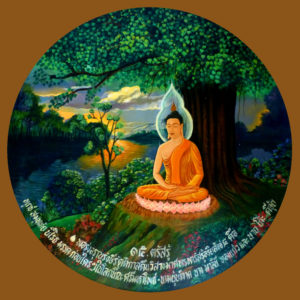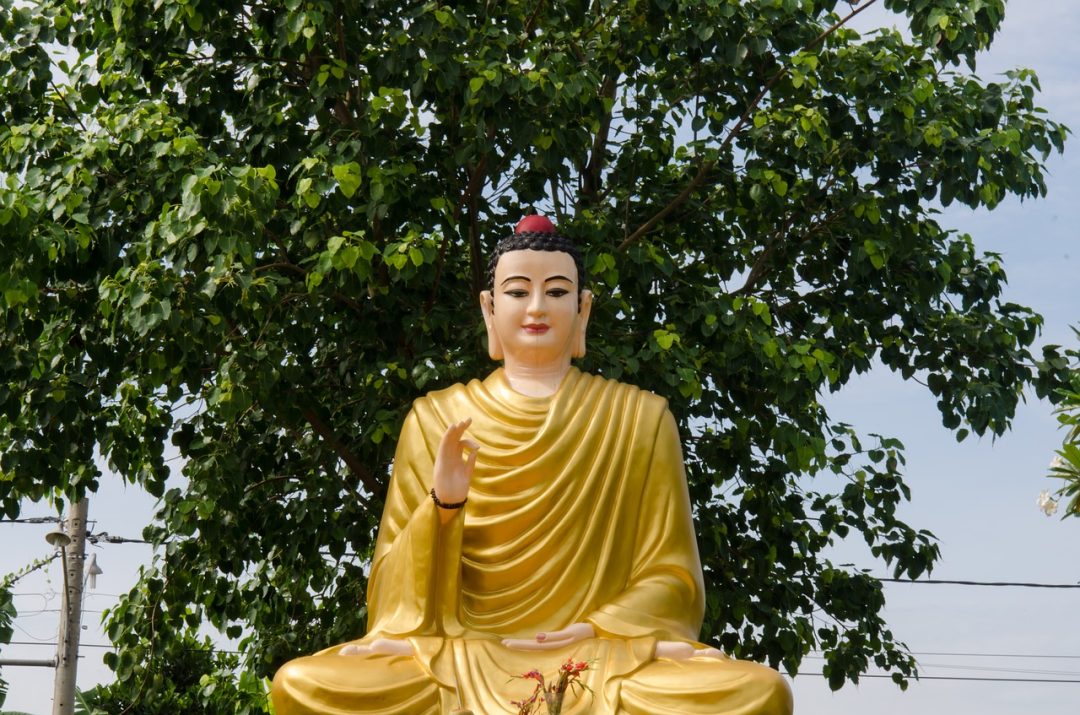The Buddha himself summarized the teachings (dharma) well when he said, “Avoid evildoing (harming), practice virtue well, subdue your mind”. This is the core of Buddhist beliefs. It is based on the principles of karma and the wisdom realizing emptiness.
Karma, Nirvana, and Emptiness
Buddhists do not believe in a Creator God. The Buddha was a man called Shakyamuni. He developed his mind to such an extent that he became enlightened -someone who is omniscient (all-knowing) and perfectly understands what to give up and what to take up completely ending all suffering, and can emanate anytime, anywhere as anything to help other beings reach that same state.
All Buddhists, from all schools of Buddhism all, believe in the selflessness of persons and selflessness of things. What does this mean? Things do not come from their own side, exuding their own unique qualities, existing in and of themselves. All things depend on causes and conditions. All things depend on their parts. According to the highest philosophical school of Buddhism, all things are mere projections based on our past karma.
Who created the world? You did. Your actions (karma) of body, speech, and mind created the projection that is this world. If two people or a million people see the same thing as the sun rising, it is their karma that is the same for perceiving it so. If one person sees one thing and another person sees another, such as in any argument, likes or dislikes, it is because of their karma is different for perceiving it so.
Shakyamuni, the prince who later on became buddha (an enlightened being) realized this and was able to reach a state “beyond grief” or no more suffering. This state is called nirvana- the permanent cessation of mental afflictions due to the analysis of the four Arya truths.
The Four Arya Truths and the Path to Enlightenment (Buddhahood)
What are the Four Arya Truths? These are the realizations of the Buddha Shakyamuni as he sat under the bodhi tree and reached enlightenment: The Truth of Suffering, The Truth of the Origin of Suffering, The Truth of the Cessation of Suffering, The Truth of the Path to End Suffering.

In other words, a Buddhist believes that our current state, the realm we live is in suffering. A Buddhist does not believe in some permanent happiness to be had in this world or that somehow “life isn’t so bad”. A Buddhist has renunciation (the first of the three principal paths) meaning day and night he is thinking of how to get out of this life and reach enlightenment. This is the truth of suffering.
A Buddhist believes that the origin of suffering is ignorance- a misperception of yourself and your world -believing in a self-existent self and its parts, persons and things that exist from their own side, without it being a projection of your mind forced on you by your past karma. We are born with a tendency to see things as existing in and of themselves. As we grow from birth, this tendency grows. We begin to believe that things have qualities of being good or bad, attractive or unattractive from their own side, having nothing to do with us. We begin to like things and dislike things based on this ignorant thinking. We act based on this ignorance and collect karma. This bad karma causes us to be reborn again and again in the cycle of suffering (samsara). This is the truth of the origin of suffering.
How does one end samsara, the cycle of suffering?
In the Sutra Requested by Rashtrapala, the Buddha said: “Beings must wander here (in suffering life) because they do not understand emptiness.” What is emptiness? The fact that nothing has a self-nature, everything is a projection forced on us by our past karma. This is the truth of the cessation of suffering.
Lastly is the truth of the path to the cessation of suffering. Through study, contemplation, and meditation, one can see emptiness directly.
At this point, one is called an Arya and sees the four arya truths as mentioned above. He enters the Path of Seeing. Then one habituates oneself to these realizations. He enters the Path of Habituation.
Finally, when one has removed all the obstacles to omniscience, one has reached the Path of No More Learning and becomes a Buddha.
It is hard to write about Buddhism because the more you learn about it, the deeper you go both intellectually and spiritually.
 Just to give you a taste of the depth of these teachings, the collected works of Buddhism can be divided into the sutras (Buddha’s original words) as well as their commentaries in Sanskrit and Tibetan. These are called the Kangyur and the Tengyur, respectively. The kangyur is composed of some 108 volumes while the tengyur is about 3,626 texts in 224 volumes.
Just to give you a taste of the depth of these teachings, the collected works of Buddhism can be divided into the sutras (Buddha’s original words) as well as their commentaries in Sanskrit and Tibetan. These are called the Kangyur and the Tengyur, respectively. The kangyur is composed of some 108 volumes while the tengyur is about 3,626 texts in 224 volumes.
The five great books of Buddhism into which the Kangyur and Tengyur can be divided are: The Abhidharma (Higher Knowledge), Prajnaparamita (Perfection of Wisdom), Vinaya (Vowed Morality), Madhyamika (Middle Way Philosophy) and Pramana (Buddhist Logic). Of these, only the sutras on abidharma and vinaya have survived in the South Asian tradition of Buddhist Theravada.
Currently, the Tibetan people have managed to preserve most of these teachings since the time of Buddha Shakyamuni. They represent the most complete works of Buddhism. Since the invasion of Tibet by the Chinese in 1959 millions of texts were destroyed but these collected works have found their way back to India in the refugee settlements as well as the West.
Today, currently, an American geshe (the equivalent of a doctorate awarded at a Tibetan Buddhist Monastery) named Michael Roach has spearheaded a project of tremendous proportions to preserve these texts and input them online. The project is called the Asian Classics Input Project. To date, they are still seeking out and discovering lost texts in Mongolia and Russia among other places.





